Effect of Interfacial Layer on Electromigration
Lately, we studied the effects of the structure and chemistry of the interface on the electromigration induced damages in thin film systems. We observed quite interesting interface driven phenomenon, such as inverse Blech length and thermomigration- electromigration coupling induced backward mass transport at anode of Cu film fabricated as per Blech structure, etc.
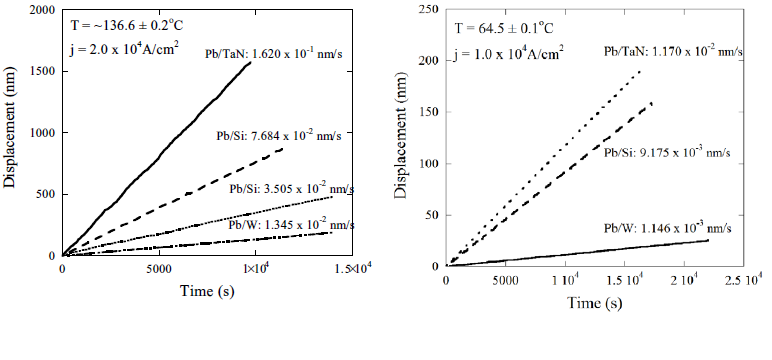
2. N. Somaiah, D. Sharma and P. Kumar, J. Phys. D. 49 (2016) 20LT01.
Interaction between Electromigration and Mechanical Stresses
In many micro - and nano-devices, mechanical stresses (either directly applied or generated due to the thermal cycling) and electric current induced electromigration interact with each other. The effects of these interactions on interfacial sliding at hetero-interfaces, such as metal-oxide, metal-semiconductor etc., were experimentally as well as analytically studied. Idealized systems, such as double shear-lap samples and standalone Cu filled through silicon vias (TSVs) were employed.
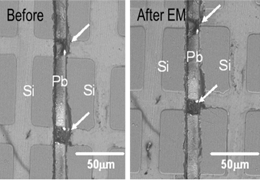
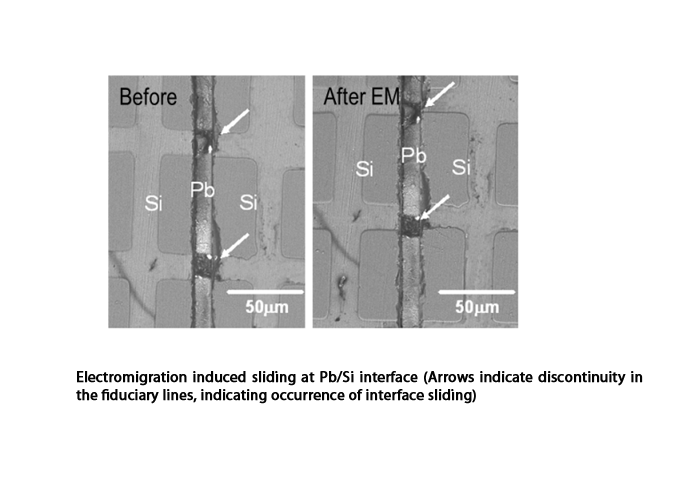
Electromigration induced sliding at Pb/Si interface (Arrows indicate discontinuity in the fiduciary lines, indicating occurrence of interface sliding)
It was shown that even electric current (or electromigration) can cause interfacial sliding. Also, It was observed that the mass flow flux due to both mechanical stresses and the electromigration can be linearly superimposed, implying that if the mass fluxes due to electromigration and the shear stress are the in the same direction, the net interfacial sliding rate will be enhanced, whereas if they are in opposite directions, the net sliding will be reduced.
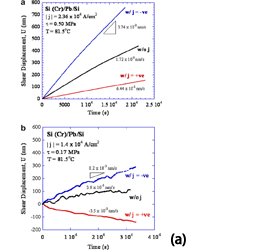
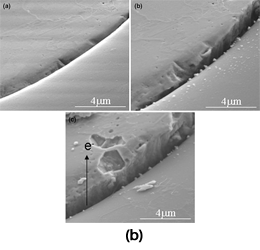
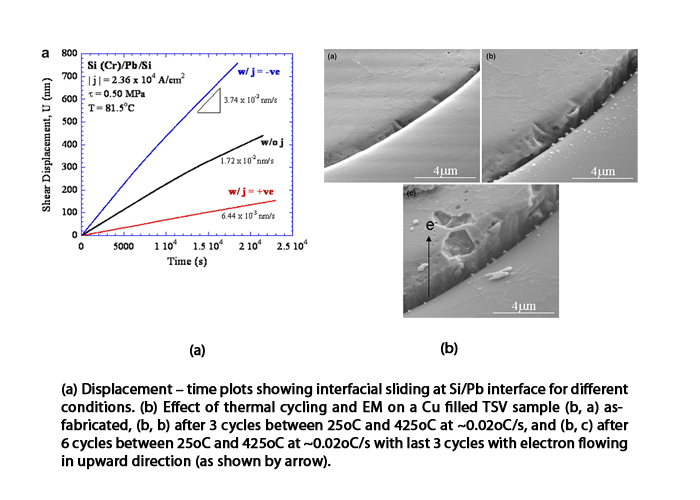
(a) Displacement – time plots showing interfacial sliding at Si/Pb interface for different conditions. (b) Effect of thermal cycling and EM on a Cu filled TSV sample (b, a) as-fabricated, (b, b) after 3 cycles between 25oC and 425oC at ~0.02oC/s, and (b, c) after 6 cycles between 25oC and 425oC at ~0.02oC/s with last 3 cycles with electron flowing in upward direction (as shown by arrow).
Relevant References3. P. Kumar and I. Dutta, Acta Mater 59(2011) 2096
